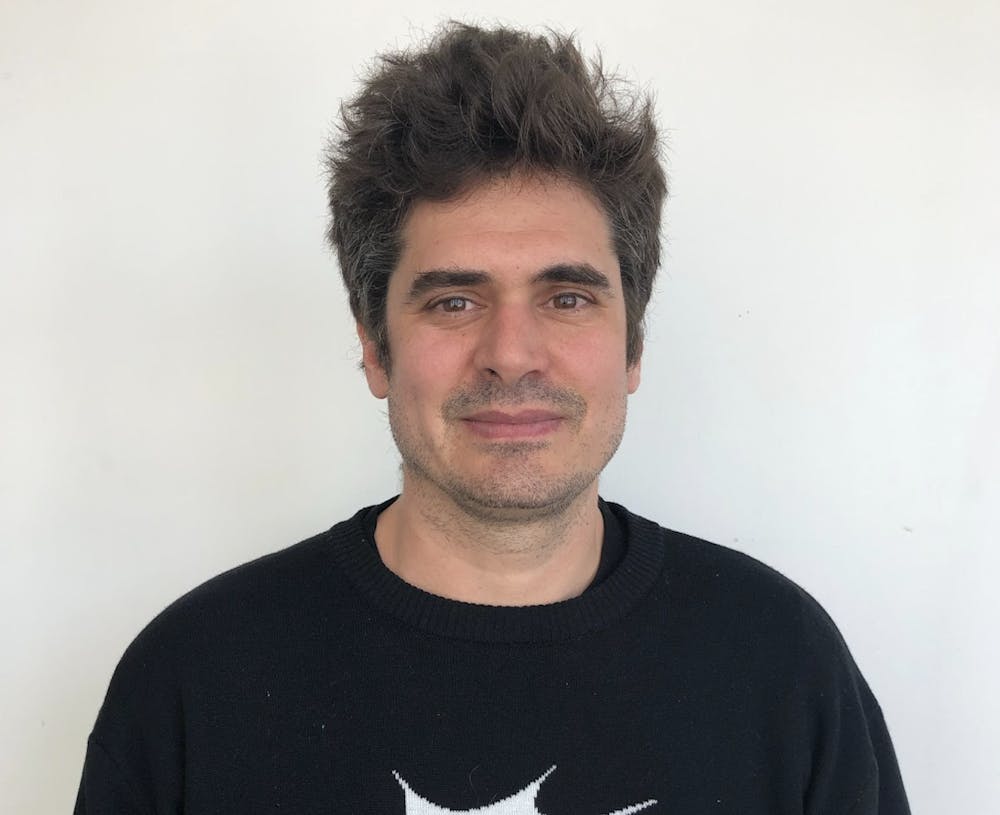Jimmy Joe Roche is an interdisciplinary artist whose portfolio includes music, film, sculpture and performance. In an interview with The News-Letter, he discussed his upbringing, his journey into the art world and a partnership with another artist that he has found valuable.
The News-Letter: Your interests are very wide-ranging: You've done music, film, visual arts and a non fungible token. At your core, how would you define yourself as a creator?
Jimmy Joe Roche: Life is long, and everyone changes over time. That's why I like to evolve my biography as I get interested in new things over the years. Right now, I define myself primarily as a filmmaker and a sound artist, but I also curate film screenings in Baltimore, so I would add “curator” in there as well. I don't necessarily call myself a musician, but I love sound, and I like making it, recording it, playing with it, thinking about it and listening to it.
N-L: How did you learn that you wanted to be an artist?
JR: When I was a kid, my parents were artists, and there was no other path that was really presented to me. They were always working and talking about their work, and they were friends with a lot of artists. Creativity was very present in my home life, so it just seemed natural. No one ever said, “You could be a dentist” or, “You could be a scientist.”
N-L: Horror is a genre you frequently explore. What shaped your interest in horror?
JR: When I was a kid, I would go to the grocery store with my mom in Tallahassee, Fla., where I grew up, and there was a little video section where you could rent movies. They had a family section and a kids section, but the horror movies always had the coolest boxes, and that's how I figured out what I wanted to watch. I have always had a kind of macabre sense of humor in those things.
My parents collected a lot of Haitian paintings, which were very violent — there were depictions of the overthrow of the regime, where people had been cut up with machetes and burned in barrels and things like that. My dad also collected American folk art, some of which engages with the spirit world, and objects and creatures that are made out of wood but have a presence that is creepy and a little bizarre. So I was around a lot of stuff like that. The imagery around me was broken open into a darker and more mysterious world that I had to process. An interest in things that are scary or supernatural came out of the visual landscape of what I ate my cereal around and woke up [in] and moved through, and part of that had to do with my parents’ interests.
I stayed with horror because the space it creates is super interesting to me. A lot of horror films create a psychological dimension, a world in which the fears, anxieties, dreams and fantasies of the character become integrated into the space of the film. You get allowed into this privileged space that bends reality. I think that's one of the most amazing things that cinema can do.
N-L: You're also an actor. You have acted in a couple of your own films, as well as a 2008 drama called Rachel Getting Married. When did you become interested in acting?
JR: When I was in high school, I thought I was going to be an actor, but then two things happened. The summer before my senior year, I went to Bennington College for a summer program and took acting as my main subject and filmmaking as my minor subject. The filmmaking was all shot on VHS with these big shoulder-mount cameras, and then we did reel-to-reel editing. I really fell in love with that. At the same time, during my senior year, I started feeling weird about pretending to be people I wasn't. I went through this crisis where I thought, “I haven't lived any of this.” I had also started shooting and editing another film on VHS with my friends, and it was so fun. I thought, “What do I love more than anything? I love watching movies.” I realized that you can go to college for film, and you can watch movies all day. I thought, “This sounds like a fantasy.” Once that clicked in my head, I switched gears and decided to go to film school.
N-L: You frequently collaborate with Dan Deacon, a local musician. Can you talk a little bit about how that partnership evolved?
JR: When I was a freshman at Purchase College, we lived on the same floor. He introduced himself in the dorms to me, and we traded music. At that time, we both didn't like either person's offerings, but we realized that we were both definitely on the weird path in life, so we kept talking. Then one night, I walked past this place, and I heard some crazy sound, so I went in and saw this band Arab on Radar playing. I had never seen a band like that before — it was like performance art mixed with heavy punk rock — and it blew my mind. I just walked in, not knowing anything about it, and I found out that Dan booked that show. After that, I knew that he was someone that I wanted to be close to. We have been friends ever since and made art together when we could, including a large work of art called Ultimate Reality, which we toured in the U.S., Europe and Canada. We also curated the Gunky’s Basement Film Series for many years, where we showed films on 35-millimeter film, and that was really fun. He's one of my closest and oldest friends and a truly brilliant artist.
Editor’s Note: This article originally misstated the name of the band Arab on Radar.
The News-Letter regrets this error.





